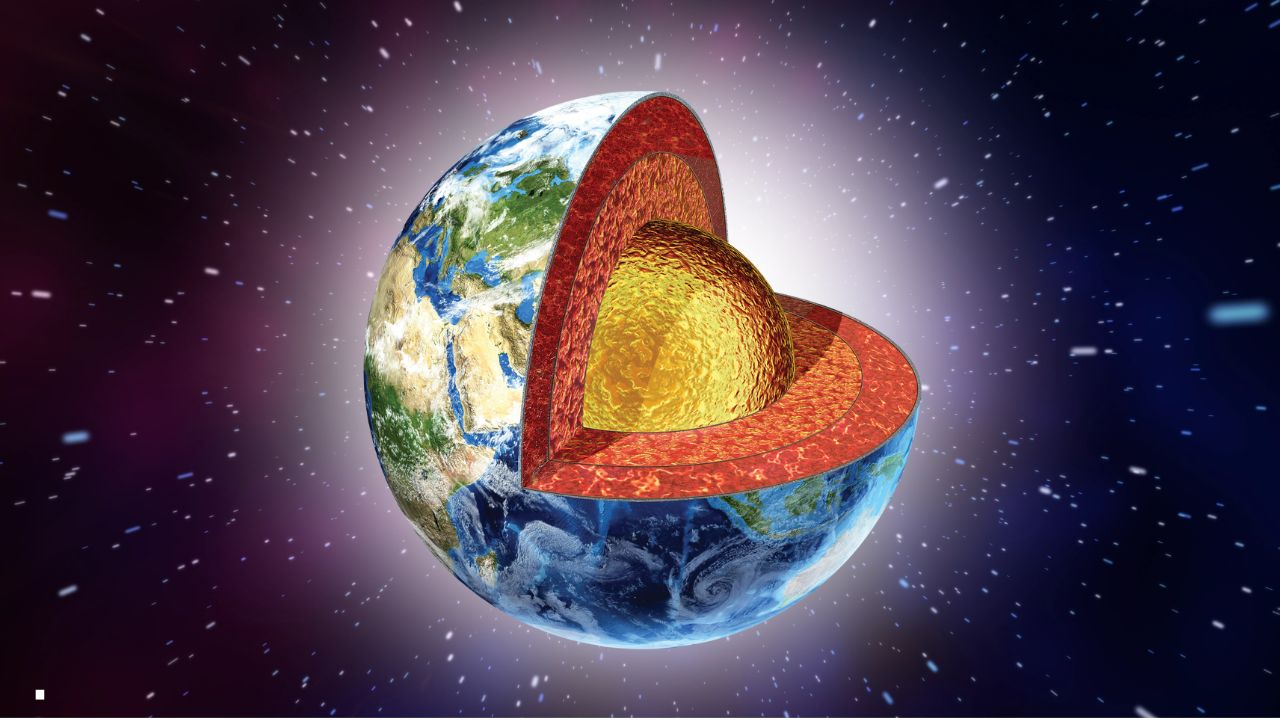A recent study published in Nature Geoscience suggests that Earth’s inner core has been changing shape over the past two decades. Led by Professor John Vidale from the University of Southern California, the research indicates that the boundary between the solid inner core and the surrounding liquid outer core may have deformed by up to 100 meters in some areas.
The inner core, composed primarily of iron and nickel, plays a crucial role in generating Earth’s magnetic field, which protects the planet from harmful solar radiation. However, its exact structure and behavior remain a mystery, with scientists relying on seismic waves from earthquakes to study its properties.
A Constantly Moving Core
Unlike the outer core and the rest of the planet, the inner core rotates independently. This movement is essential for maintaining Earth’s magnetic field. Without it, the planet could lose its protective shield, much like Mars, which became a barren world after losing its magnetic field billions of years ago.
The study analyzed seismic wave patterns from earthquakes that occurred in the same location between 1991 and 2023. Researchers found evidence suggesting that the inner core slowed down around 2010 before accelerating again, further supporting the idea that its motion is not constant.
Why Is the Inner Core Changing Shape?
The deformation likely occurs where the solid inner core meets the liquid outer core, an area of intense heat and pressure. Scientists suggest that uneven gravitational forces and the movement of the outer core’s molten metal could be responsible for these changes.
Professor Hrvoje Tkalcic from the Australian National University, who was not involved in the study, described the findings as an intriguing concept that warrants further investigation. He noted that this research could help scientists refine estimates of key physical properties, such as the viscosity of the inner core, which remains one of the least understood aspects of modern geophysics.
Could This Impact Earth’s Magnetic Field?
Earth’s magnetic field has undergone fluctuations over recent decades, and researchers are now exploring whether these changes are linked to the evolving inner core.
Professor Vidale cautions against sensationalizing the findings, emphasizing that while the study provides valuable insights, there are still uncertainties.
“We are not 100% sure that we are interpreting these changes correctly,” he told the BBC (source). “Scientific knowledge is constantly evolving, and like many researchers, I have been wrong before.”
A Long-Term Transformation
Over billions of years, the liquid outer core will continue to cool and solidify, eventually merging with the inner core. When this happens, Earth will likely lose its magnetic field, making the planet uninhabitable. However, this process is expected to take billions of years, long before the Sun expands and engulfs Earth.
For now, scientists continue to probe the mysterious depths of our planet, searching for answers about the inner workings of Earth’s core and its potential influence on the planet’s future.










